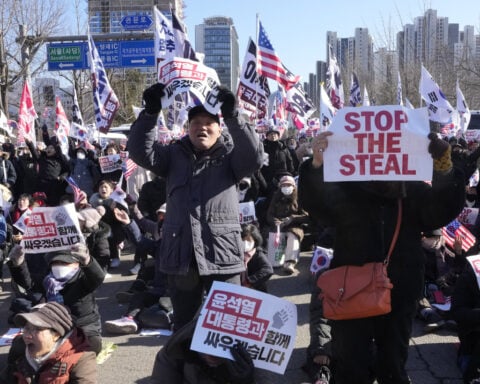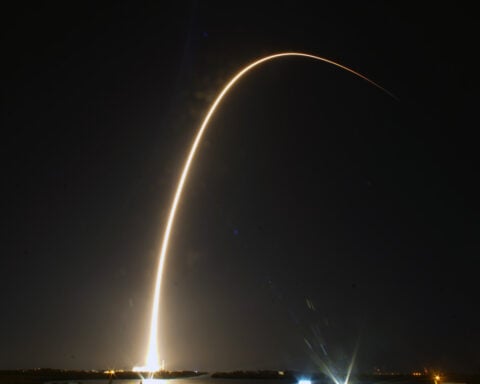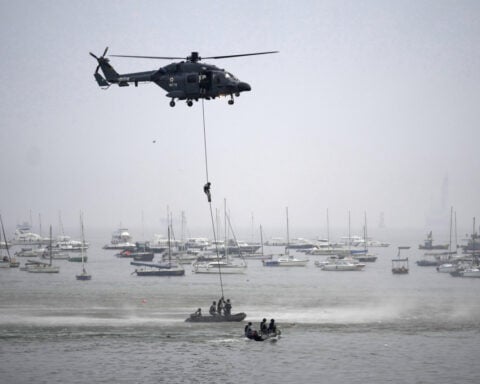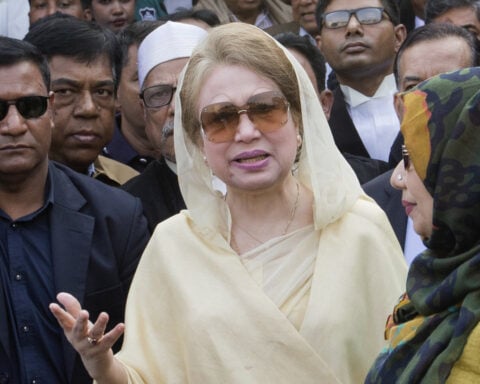ZINDA JAN, Afghanistan (AP) — Clinging to hope that finding survivors was still possible, Afghan rescuers and villagers kept digging through rubble in western Herat province on Tuesday, three days after one of the deadliest earthquakes in the region left more than 2,000 dead.
Elsewhere in Herat, people were digging graves for loved ones killed in Saturday’s 6.3 magnitude quake. On a barren field in the district of Zinda Jan, a bulldozer removed mounds of earth to clear space for a long row of graves.
“It is very difficult to find a family member from a destroyed house and a few minutes to later bury him or her in a nearby grave, again under the ground,” said Mir Agha, from the city of Herat, who had joined hundreds of volunteers to help the locals.
Across kilometers (miles) of dusty hills, there was little left of villages besides rubble and funerals.
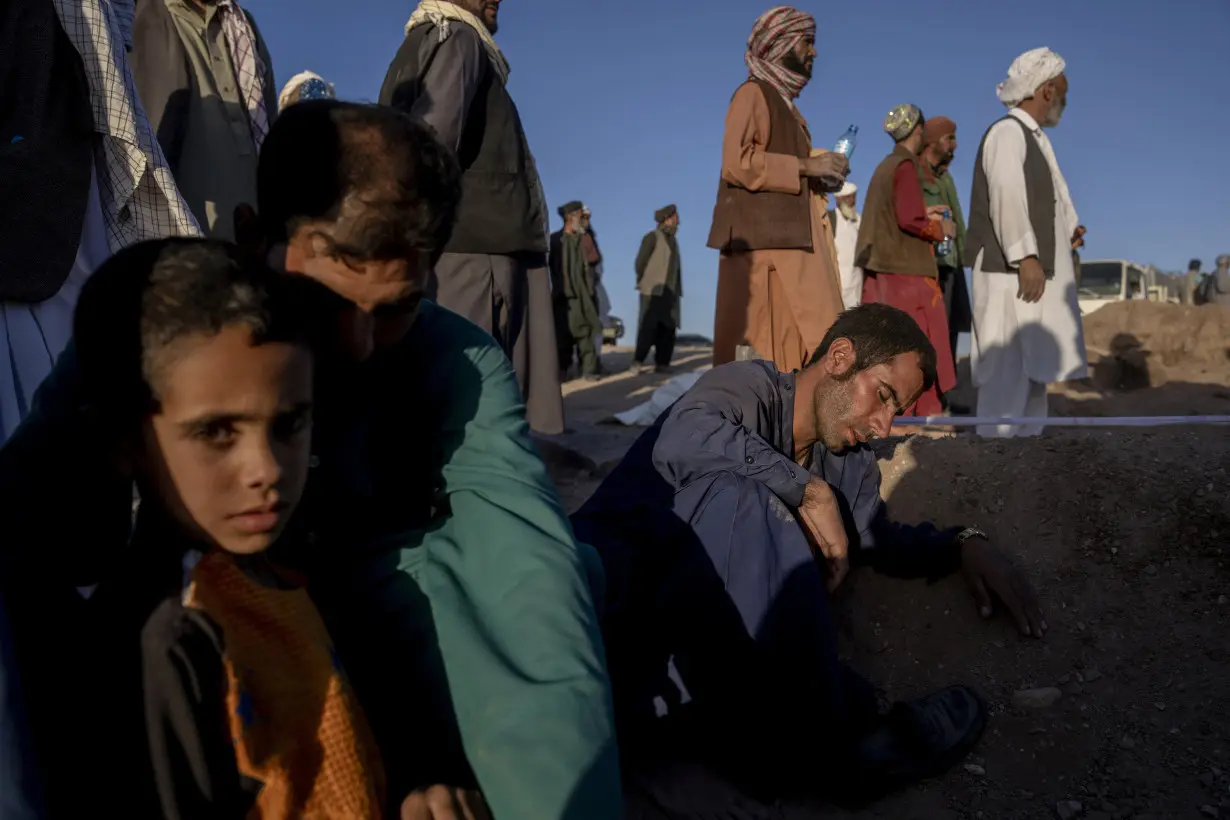
In Naib Rafi, a village that previously had about 2,500 residents, people said that almost no one was still alive besides men who were working outside when the quake struck. Survivors worked all day with excavators to dig long trenches for mass burials.
Janan Sayiq, a spokesman for the Afghan Taliban government's national disaster authority, said the quake killed and injured thousands but couldn’t provide a breakdown for the casualties. Earlier, Taliban officials said more than 2,000 had died across Herat.
The epicenter was about 40 kilometers (25 miles) northwest of the city of Herat, the provincial capital, the U.S. Geological Survey said. Several of the aftershocks have been strong, including one on Monday that caused residents of the city to rush out of their homes once again.
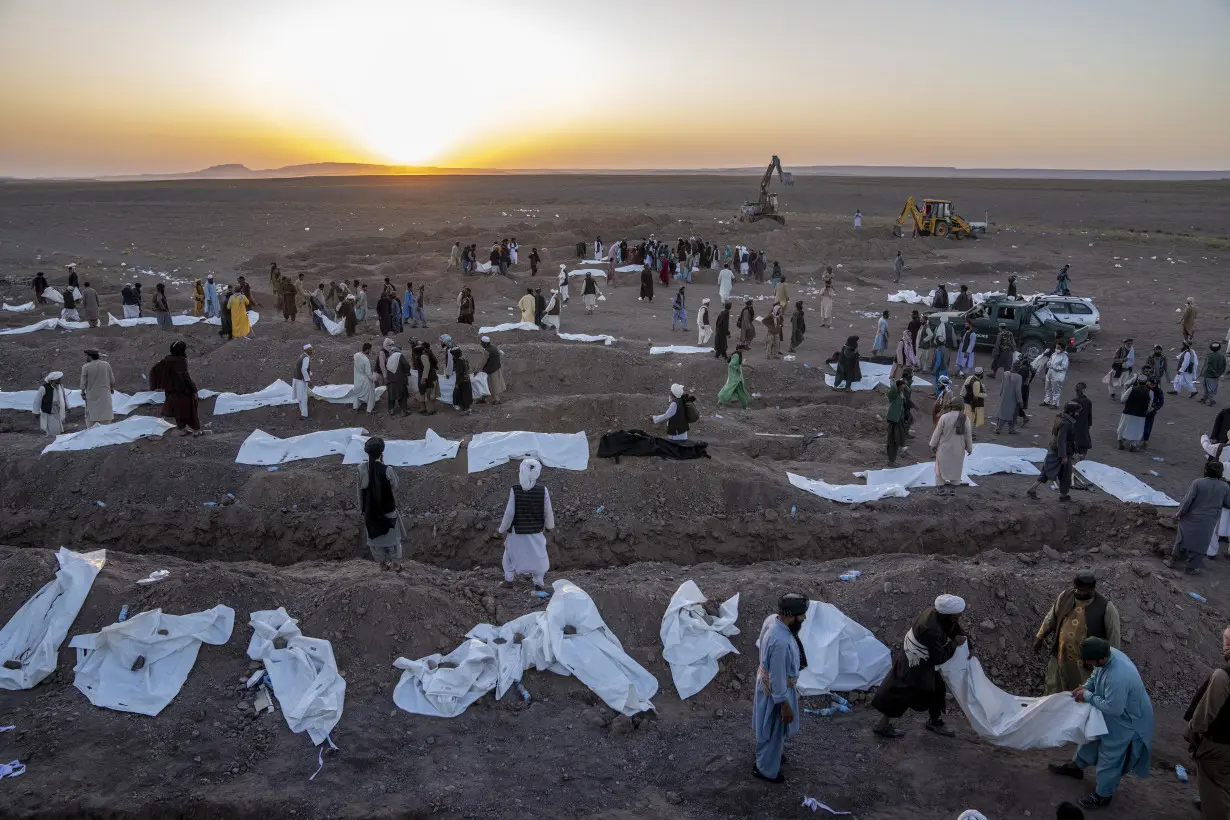
The United Nations said the Zinda Jan district was the worst-affected area, with 1,294 deaths and 1,688 injuries. In addition, 485 people — 191 men and 294 women — are missing. Six schools are also reported to have been destroyed, said the U.N.
Nearly 2,000 houses in 20 villages were destroyed, the Taliban have said. The area hit by the quake has just one government-run hospital.
As winter approaches, the new disaster is likely to make it even harder for people to meet basic needs, such as shelter, food and medicine, aid groups have warned.
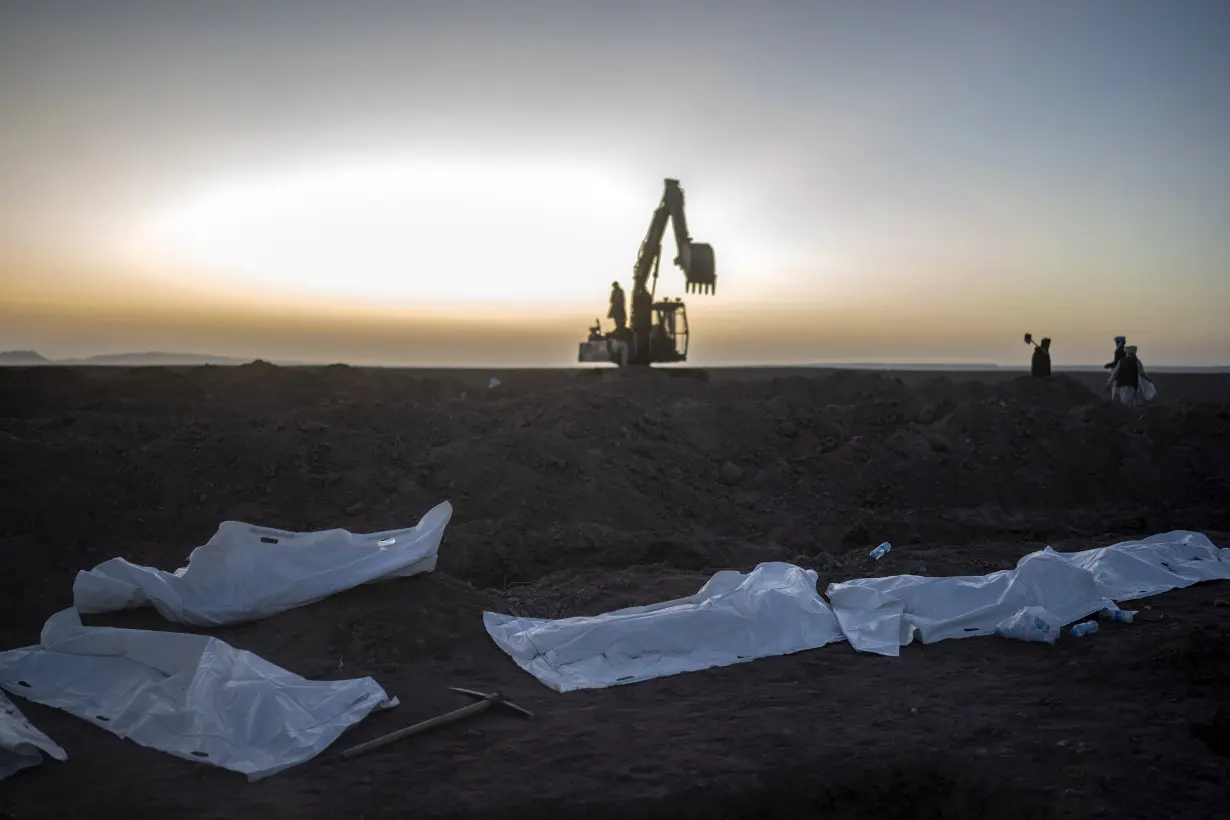
It is not clear how much foreign aid has reached Herat since Saturday. The global response has been slow. Much of the world is wary of dealing directly with the Taliban-led government and focused on the deadly escalation between Israel and the Palestinians in the aftermath of the surprise attack by Gaza militants on Saturday.
Pakistan has pledged to send blankets, tents, and medicines, and China is reported to have offered cash and other forms of emergency humanitarian assistance.
Other foreign governments said they will work with aid agencies on the ground to help with rescue and recovery, and Afghans have launched fundraising campaigns.
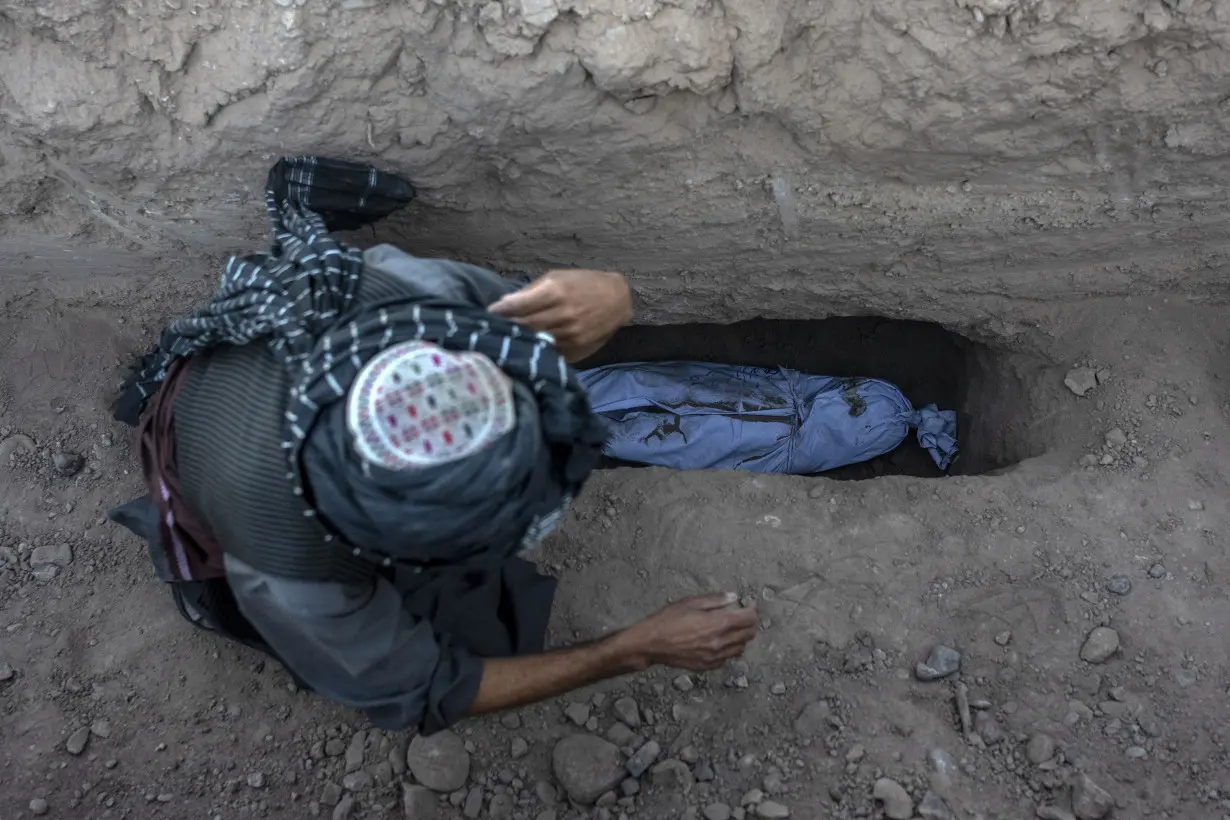
Authorities in Kabul did not respond to questions about how much aid has arrived from overseas.
In a statement, the International Federation of Red Cross and Red Crescent Societies urged the media not to turn away from Afghanistan. “Your reporting can bring back attention to Afghanistan and the Afghan people’s untold stories of resilience and need,” an IFRC statement said.
“Afghanistan needs you — now, more than ever. Please, let’s not add ‘forgotten’ to the long list of tragedies that this resilient nation has already endured,” IFRC spokesperson Tommaso Della Longa said in the statement.
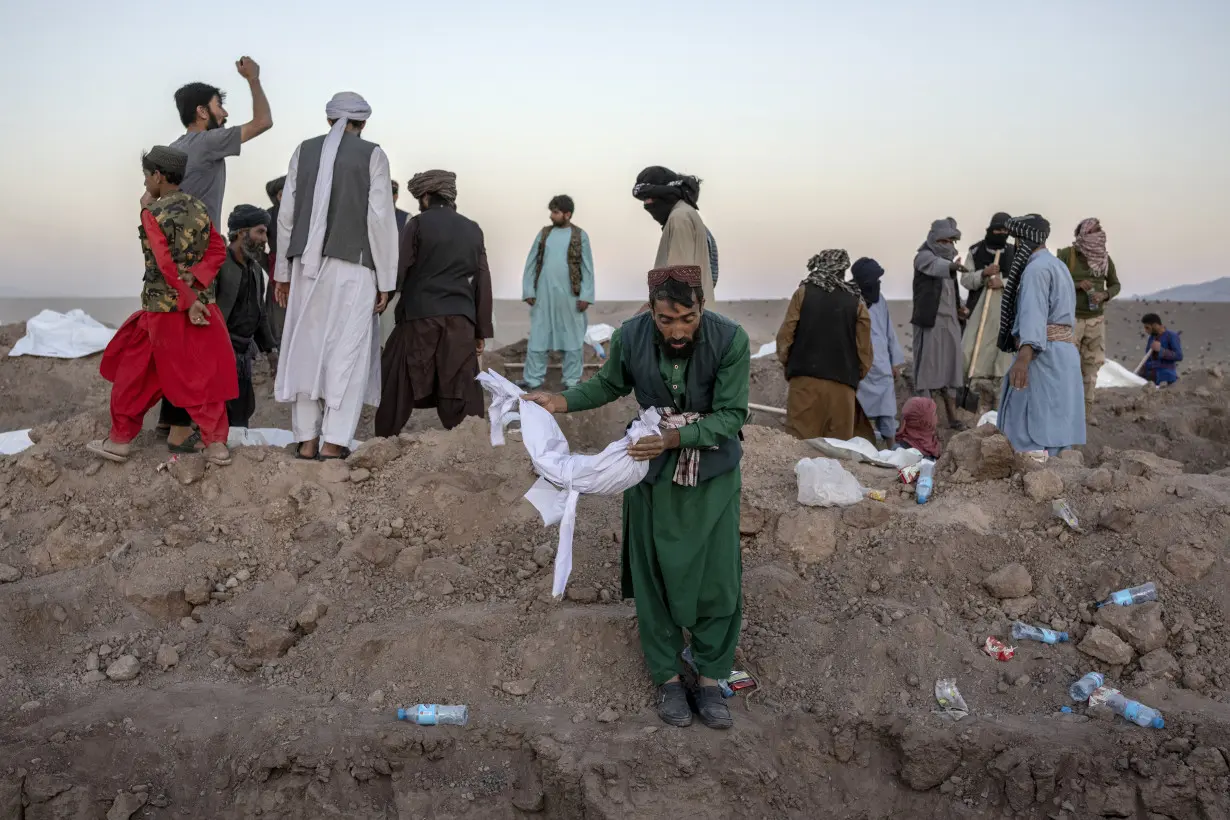
The Taliban’s justice ministry has urged national and international charity foundations, businesses and Afghans to gather aid for the province.
“Due to the extent of damages and casualties caused by this incident, a large number of our compatriots in Herat province need urgent humanitarian aid,” the ministry said in a statement.
The Taliban-appointed deputy prime minister for economic affairs, Abdul Ghani Baradar, and his team visited the quake-affected region on Monday to deliver “immediate relief assistance” and ensure “equitable and accurate distribution of aid,” authorities said.
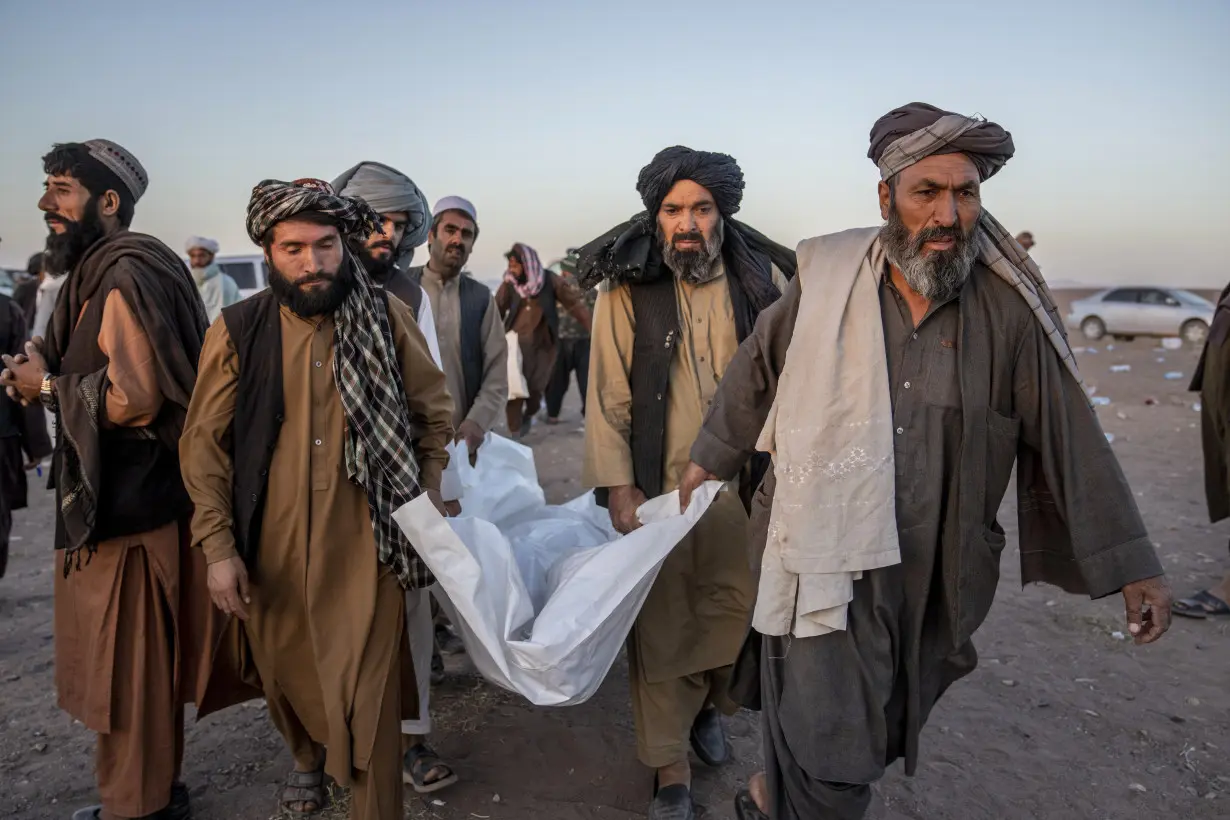
During his trip, Baradar assured a gathering of officials and elders that the government has mobilized all available resources.
“Various ministries and departments are working tirelessly to provide urgent assistance and build shelters for those who have lost their homes,” said Baradar. He highlighted their commitment to transparently distributing the collected aid to deserving individuals, including the establishment of a dedicated commission.
Baradar also appealed to international aid institutions and agencies to provide all possible assistance, emphasizing the urgency of their support during this profound tragedy.
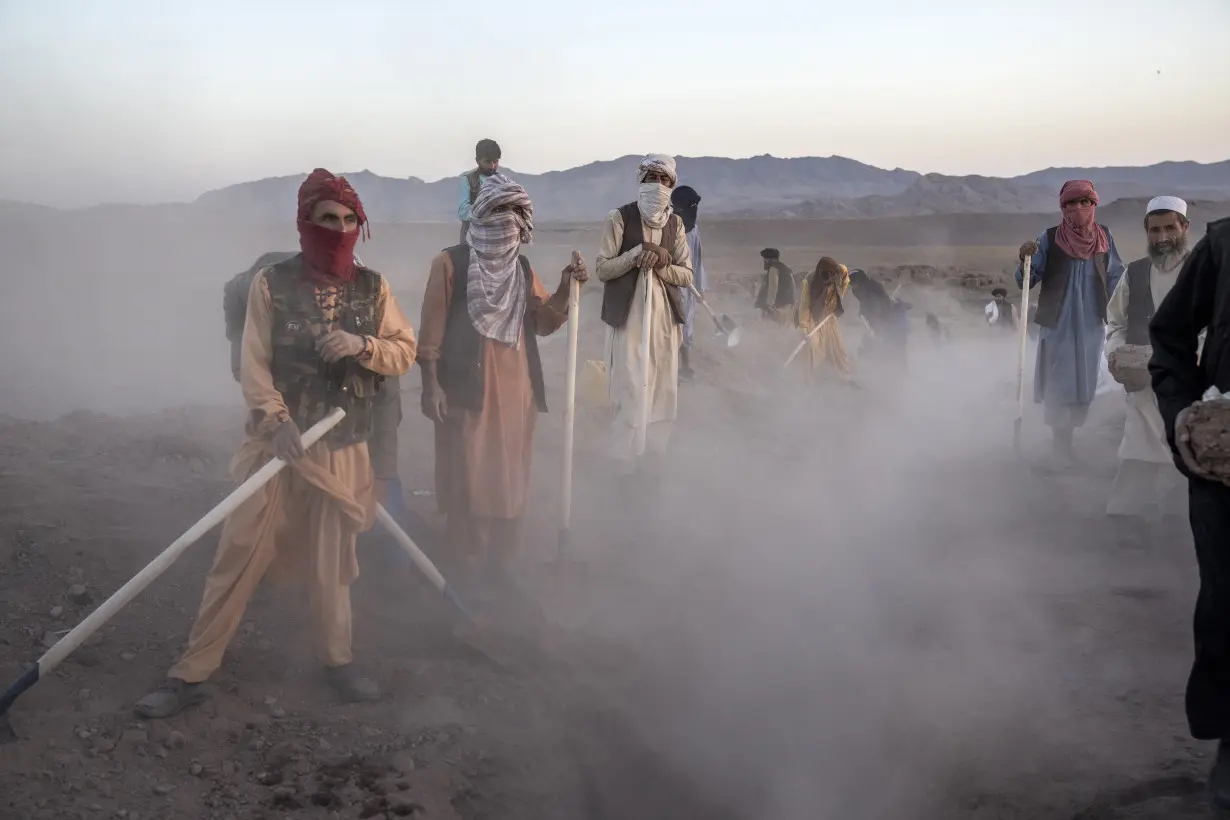
The Taliban’s supreme leader has made no public comments about the quake.
Top U.N officials in Afghanistan also went to Zinda Jan to assess the extent of the damage. In neighboring Pakistan, the government held a special session to review aid for Afghanistan, including relief teams, food, medicine, tents and blankets.
Vital infrastructure, including bridges, was destroyed and emergency response teams have been deployed to provide humanitarian assistance, the International Rescue Committee said.
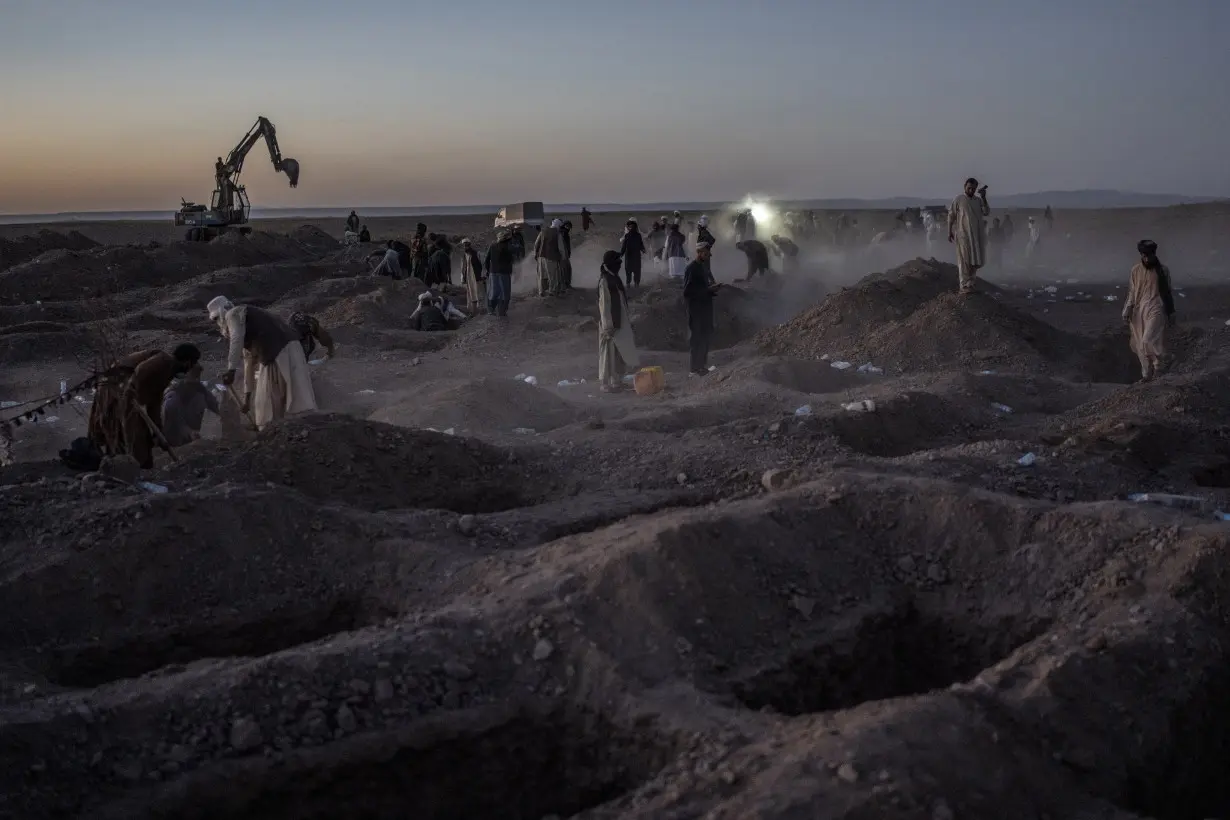
More than 35 teams from the military and nonprofit groups are involved in rescue efforts, said Sayiq, from the disaster authority.
Afghans are still reeling from other recent disasters, including the magnitude 6.5 earthquake in March that struck much of western Pakistan and eastern Afghanistan, and an earthquake that hit eastern Afghanistan in June 2022, flattening stone and mud-brick homes and killing at least 1,000 people.
___
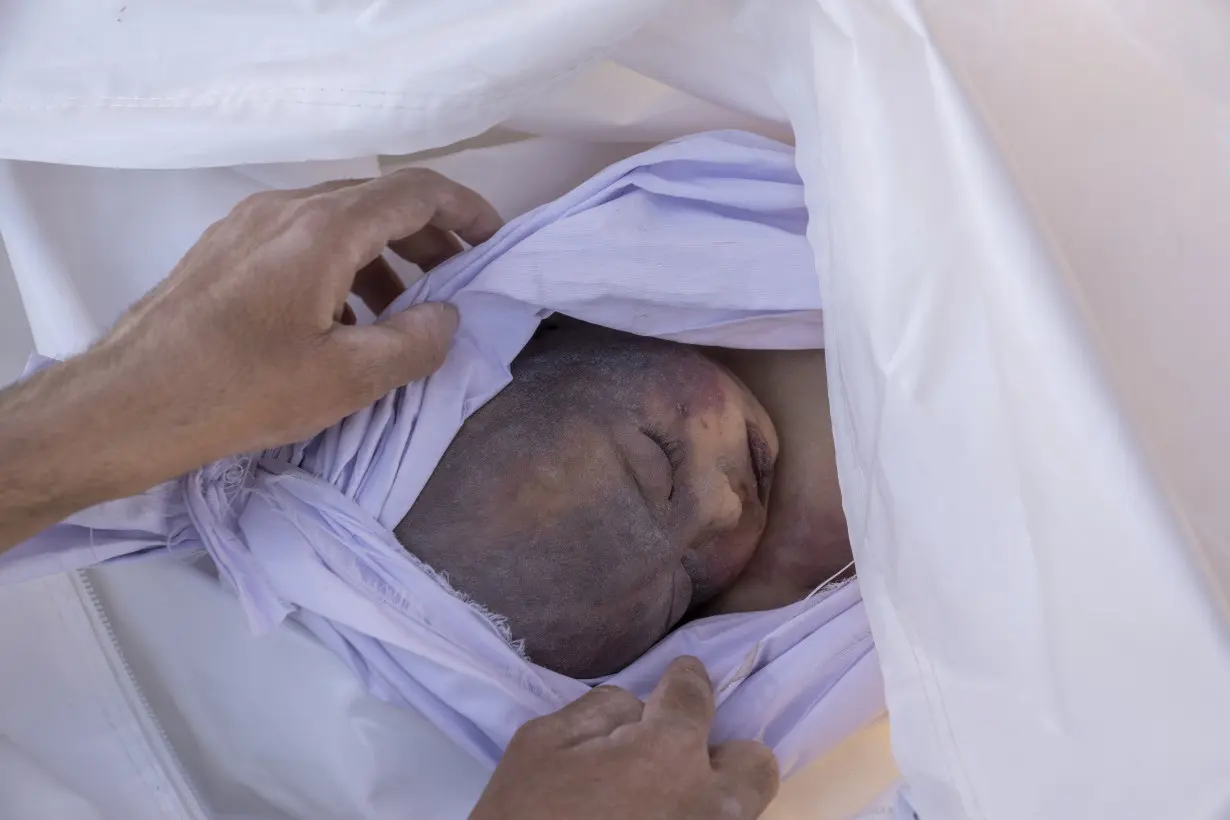
AP writer Rahim Faiez contributed to this report from Islamabad.
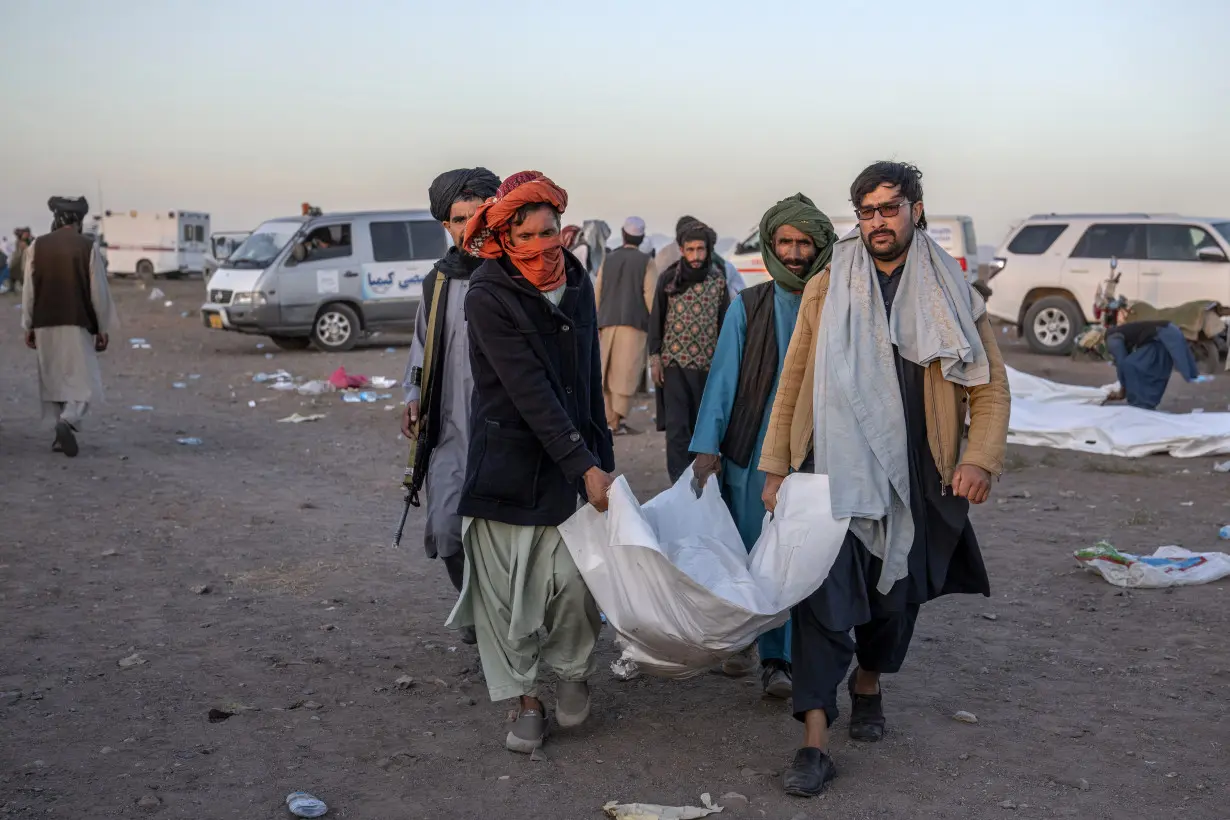

 India's navy launches submarine, warships to guard against China's presence in Indian Ocean
India's navy launches submarine, warships to guard against China's presence in Indian Ocean
 UK inflation unexpectedly eases in December, which could reduce pressure in bond markets
UK inflation unexpectedly eases in December, which could reduce pressure in bond markets
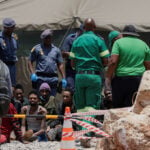 Body count from South African mine siege rises to 60
Body count from South African mine siege rises to 60
 Question on ASEAN stumped Hegseth at Senate hearing. What is it and why is it important?
Question on ASEAN stumped Hegseth at Senate hearing. What is it and why is it important?
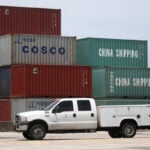 US importers rush in goods from China as Trump tariff threat looms
US importers rush in goods from China as Trump tariff threat looms
 Novak Djokovic breaks a tie with Roger Federer for the most Grand Slam matches in tennis history
Novak Djokovic breaks a tie with Roger Federer for the most Grand Slam matches in tennis history
 China's RedNote: what you need to know about the app TikTok users are flocking to
China's RedNote: what you need to know about the app TikTok users are flocking to
 British author Neil Gaiman denies ever engaging in non-consensual sex as more accusers come forward
British author Neil Gaiman denies ever engaging in non-consensual sex as more accusers come forward

